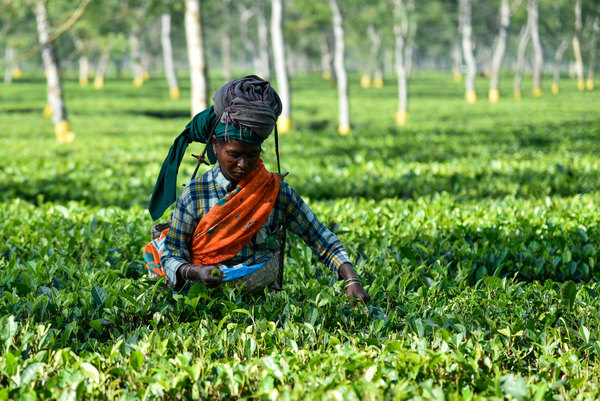How do you track a bee?
Blog contributed by Bettina Carter, Plant Protection Content Editor, CABI Our honey bees are dying in large numbers, and in an attempt to understand why, scientists at the Natural Resources Institute and Rothamsted have developed an ingenious monitoring system using a technique called harmonic radar entomology. This involves attaching tiny antennae to the bees' backs to…
CABI Switzerland welcomes Université Populaire
Based in Delémont, part of Canton Jura, CABI Switzerland recently opened its doors to local members of the community as part of the regional Université Populaire. On the visit, Dr Hariet Hinz presented key research and environmental development projects that CABI staff work on each day. Here, local members of the community had the opportunity to see first…
What happens to the waste left after the Glastonbury Festival?
(Photograph by Graeme Robertson for the Guardian.) Summer music festivals are popular as ever, with nearly 900 festivals taking place in the UK alone in 2012 (efestivals), compared with 465 in 2007 - an increase of almost 50% in five years. Whereas before people who stayed in the site for more than a day and therefore camped, would…
CABI joins EU Action against the spread of Ragweed on the continent
In the largest COST Action to date, 34 EU countries have banned together to find a solution to stop Ragweed's spread on the continent. This invasive weed from North America, now one of the most common air-borne allergens in the EU, causes half of all asthma attacks in its regions, and costs the EU economy…
World Environment Day: Think . Eat . Save
World Environment Day, environment, environmental impact, food waste, food preservation
Eating insects to save the planet: would it really help?
Image from Manataka™ American Indian Council – manataka.orgIt was well publicised in the media last week that we have reached the feared 400 ppm carbon dioxide (CO2) concentration level in the Earth’s atmosphere. The World Meteorological Organization (WMO) reported in a press release last week that the 400 ppm threshold was recorded at several stations…
Managing floods and droughts for a changing climate
Extreme weather is becoming increasingly more common in the UK in recent years; for example, recent figures from the UK Environmental Agency (EA) showed that 1 in every 5 days saw flooding in 2012, but 1 in 4 days were in drought. The EA reported that rivers like the Tyne, Ouse and Tone went from their…
Open up! Open ways of dealing with invasive species
I recently attended a conference on the theme of ‘rigour and openness in 21st century science’. The conference focussed on perhaps the biggest buzzword in current science: open access. Specifically, how can open access be embraced without risking the standards and rigour that are so important to scientific enquiry?
Earth Day 2013 – The Face of Climate Change
Image courtesy of The Earth Day Network. Today is Earth Day, which this year is on the theme 'The Face of climate change'. The Earth Day Network is the organization that coordinates Earth Day around the world each year and their website www.earthday.org is encouraging people from around the world to share their stories on…
Multi-tasking plants for phytoremediation and bioenergy source
coppice willow photo courtesy of http://woodlands.co.uk Some metals, such as zinc (Zn) and copper (Cu) are micronutrients needed in small amounts by plants, animals and humans alike, for optimum health. Others, such as cadmium (Cd), aluminium (Al) and lead (Pb) are not needed and can be toxic to humans, animals and ecosystems. Thankfully, there are…


